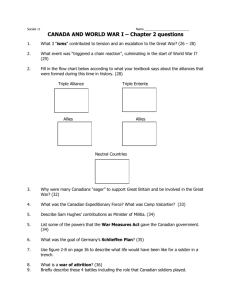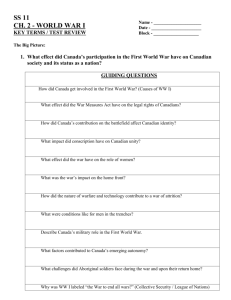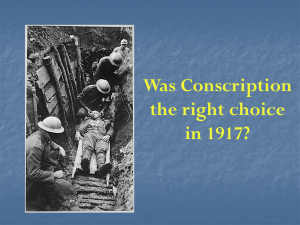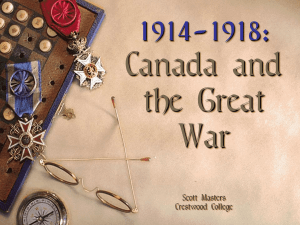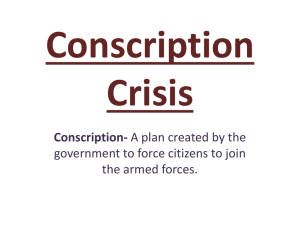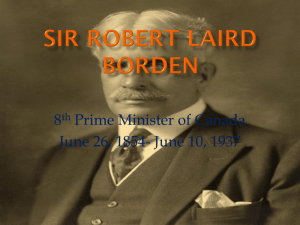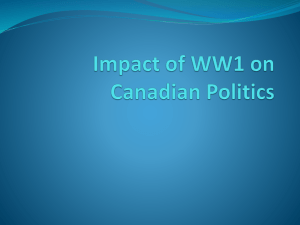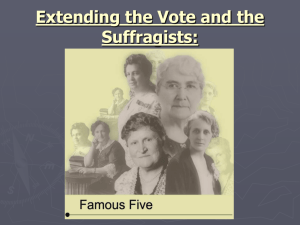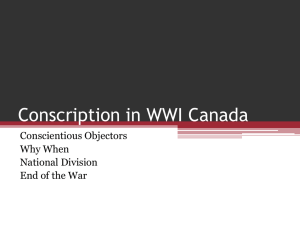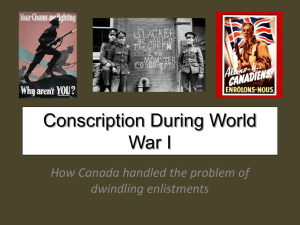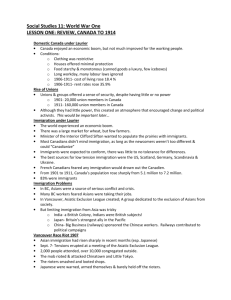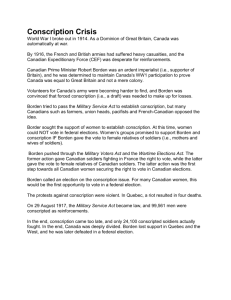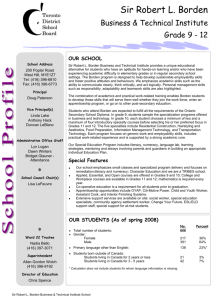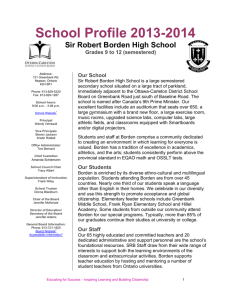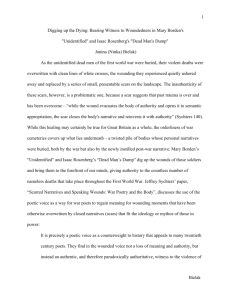Lecture Notes
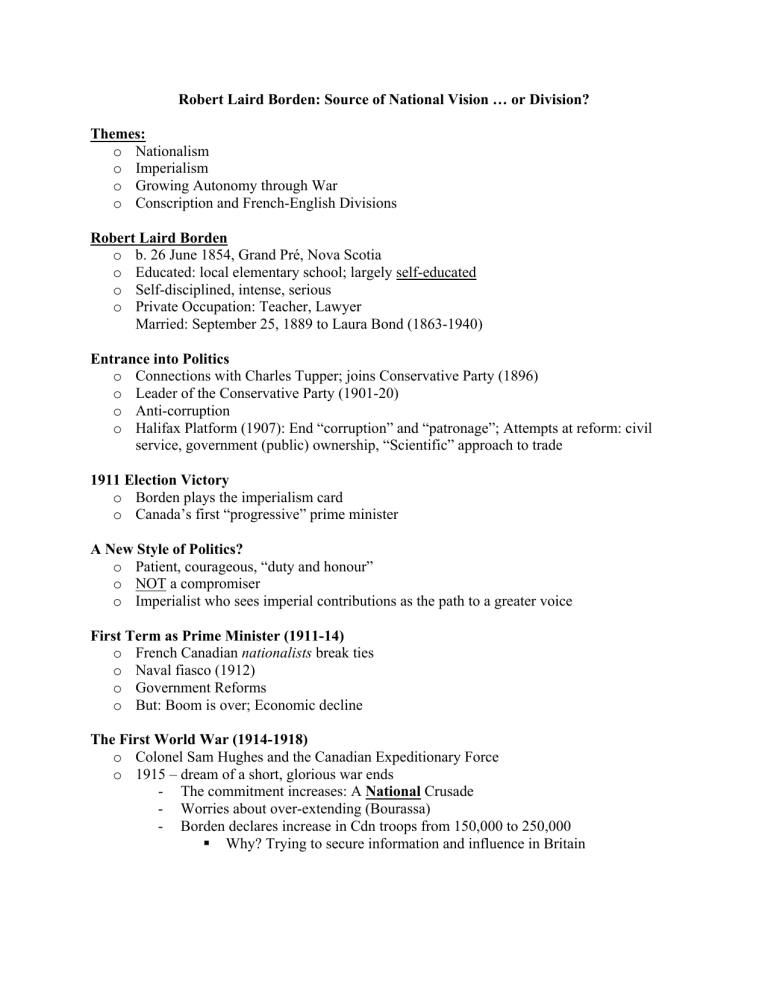
Robert Laird Borden: Source of National Vision … or Division?
Themes: o Nationalism o Imperialism o Growing Autonomy through War o Conscription and French-English Divisions
Robert Laird Borden o b. 26 June 1854, Grand Pré, Nova Scotia o Educated: local elementary school; largely self-educated o Self-disciplined, intense, serious o Private Occupation: Teacher, Lawyer
Married: September 25, 1889 to Laura Bond (1863-1940)
Entrance into Politics o Connections with Charles Tupper; joins Conservative Party (1896) o Leader of the Conservative Party (1901-20) o Anti-corruption o Halifax Platform (1907): End “corruption” and “patronage”; Attempts at reform: civil service, government (public) ownership, “Scientific” approach to trade
1911 Election Victory o Borden plays the imperialism card o Canada’s first “progressive” prime minister
A New Style of Politics? o Patient, courageous, “duty and honour” o NOT a compromiser o Imperialist who sees imperial contributions as the path to a greater voice
First Term as Prime Minister (1911-14) o French Canadian nationalists break ties o Naval fiasco (1912) o Government Reforms o But: Boom is over; Economic decline
The First World War (1914-1918) o Colonel Sam Hughes and the Canadian Expeditionary Force o 1915 – dream of a short, glorious war ends
The commitment increases: A National Crusade
Worries about over-extending (Bourassa)
Borden declares increase in Cdn troops from 150,000 to 250,000
Why? Trying to secure information and influence in Britain
Changes at Home o War Measures Act (1914) o Govt intervention in the economy (Canadian Wheat Board; Imperial Munitions Board) o Victory Loans o Wartime Business Profits Tax (1916) o Personal Income Tax (1917)
Borden Goes For Broke (1916)
raises commitment to 500,000 men; but recruitment slow (so many Cdns had already enlisted!)
National Unity Challenged again:
Regulation 17: Ontario separate schools question
“The Prussians are next door”
Vimy Ridge (9 April 1917): Canada’s Coming of Age?
birth of a nation?
Or did casualties create a crisis leading to conscription?
Borden to London (Spring 1917)
Imperial War Cabinet
Canada learning, discussing, and involved in decision-making
Imperial War Council (Apr/17)
RESOLUTION IX: dominions to be recognized “as autonomous nations of an imperial
Commonwealth”
Borden’s dream coming true? … But at what price?
Conscription
Union Govt (coalition of Conservatives and Liberals)
Laurier’s Logic
1917 Election o Military Service Act (1917) o The Government Choosing the voters:
Military Voters Act
Wartime Elections Act:
Some women get the vote
Other groups lose the franchise (“enemy aliens,” conscientious objectors) o The Result: A Canada Divided o UNION - 153 seats: 3/65 Quebec, 18/28 Maritimes, 74/82 Ontario, 55/57 West o LAURIER LIBERALS -82 seats: but 62/65 in Quebec
The triumph of British Canadian nationalism!?
Canadian Corps as Shock Army of the British Empire” (August to November 1918)
The War is Over! - 11 November 1918
Canadian at Versailles (1919) – a separate seat at the table and signature
Canada a charter member of the United Nations (1919)
The Great War as the birth of Canada as an “autonomous” nation on the international stage
A difficult transition to peace at home:
Influenza Epidemic (1918-19)
Winnipeg General Strike (1919)
Union Govt falls apart
Borden in Retirement (1920-1937)
Legacies: Canadian Nation(s)?
Borden and the imposition of a national vision
Æ
uncompromising, English Cdn vision
Led to independent Canada?
Was conscription the cost of Canadian nationhood?
Politics of racism and division?
end to possibility for a bilingual, bicultural Canadian national identity?
